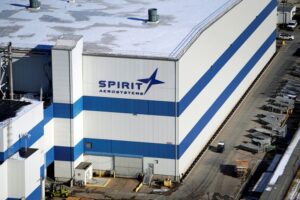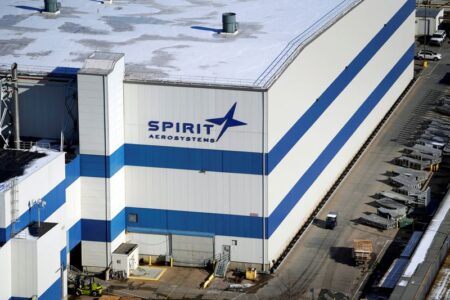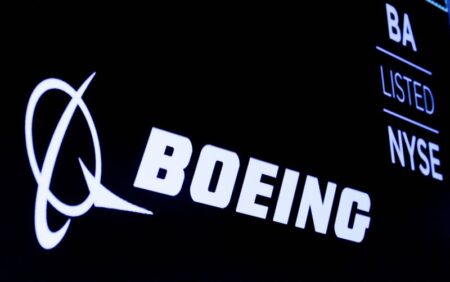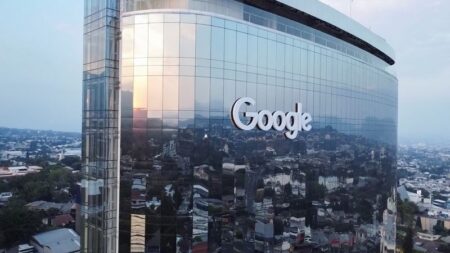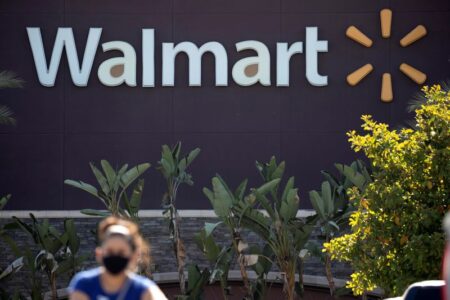Climb Global Solutions has reported a significant increase in adjusted gross billings and net sales for the second quarter ended June 30, 2024. The company’s financial performance shows a 31% rise in billings and a 13% increase in net sales year-over-year.
Additionally, the acquisition of Douglas Stewart Software (DSS) is expected to enhance the company’s vendor partnerships and create cross-selling opportunities. Climb’s strategic moves, including the implementation of a new ERP system and a focus on organic growth and mergers and acquisitions (M&A), are poised to drive future profitability.
Key Takeaways
- Adjusted gross billings climbed 31% to $359.8 million, and net sales rose 13% to $92.1 million compared to the previous year.
- Climb acquired IT distributor Douglas Stewart Software, adding over 20 vendor partners and forecasting cross-selling synergies.
- The implementation of a new ERP system is anticipated to improve operational efficiency and support growth.
- Cash and cash equivalents stood at $48.4 million, with an increase in working capital by $2.8 million.
- Climb declared a quarterly dividend of $0.17 per share and highlighted a strong liquidity position to support upcoming initiatives.
Company Outlook
- Climb plans to drive organic growth with current partners and add new innovative vendors.
- The company is actively evaluating M&A opportunities to contribute to earnings and align with strategic goals.
- The acquisition of DSS, with $5.3 million in EBITDA, is expected to boost the top line and operational efficiency.
Bearish Highlights
- No specific bearish highlights were mentioned in the provided context.
Bullish Highlights
- Climb’s mid double-digit growth in adjusted gross billings is expected to leverage the bottom line positively.
- The company’s broad product portfolio and aggressive sales approach are likely to continue driving growth.
Misses
- There were no specific misses reported in the provided context.
Q&A Highlights
- Dale Foster discussed plans to integrate teams with a recently merged company, which is expected to yield immediate benefits and show results in Q3.
- Climb’s adjusted EBITDA for the trailing 12 months is around $5 million, with the merger expected to be immediately accretive to earnings.
- The company remains agile in the market, which allows for quick adaptation to changes.
In the competitive landscape, Climb Global Solutions has managed to sustain strong sales in security despite the COVID-19 pandemic slowing down hardware sales for some competitors. The company’s ability to quickly adapt, explore different sales disciplines, and incentivize their sales team has contributed to its solid performance. With the new ERP system set to be fully operational by the end of the year, Climb is gearing up for continued success and expressed gratitude to its shareholders and team for their efforts in this transition.
InvestingPro Insights
Climb Global Solutions has exhibited a robust financial performance, as highlighted by the significant increase in adjusted gross billings and net sales. The company’s strategic initiatives, including the acquisition of Douglas Stewart Software and the implementation of a new ERP system, are set to further bolster its market position.
InvestingPro Data reveals a market capitalization of $330.77 million and a Price/Earnings (P/E) ratio that stands at 24.64, which is adjusted to 20.31 for the last twelve months as of Q2 2024. This indicates that while the company trades at a higher valuation, it is expected to grow into its earnings. Additionally, the revenue growth of 11.39% over the last twelve months reinforces the company’s upward trajectory.
An InvestingPro Tip points out that Climb holds more cash than debt on its balance sheet, which is a positive sign for investors looking for financial stability. Moreover, the company has maintained dividend payments for 22 consecutive years, demonstrating its commitment to shareholder returns. This is particularly noteworthy as it aligns with the company’s recent declaration of a quarterly dividend of $0.17 per share.
It is also worth mentioning that Climb’s stock has taken a hit over the last week, which may present a buying opportunity for investors, especially considering that analysts predict the company will be profitable this year and it has been profitable over the last twelve months.
For readers interested in further insights, there are additional InvestingPro Tips available at which provide valuable information for making informed investment decisions.
Full transcript – Climb Global Solutions Inc (CLMB) Q2 2024:
Operator: Good morning, everyone, and welcome — and thank you for participating in today’s conference call to discuss Climb Global Solutions financial results for the second quarter ended June 30, 2024. Joining us today are Climb’s CEO, Mr. Dale Foster; the company’s CFO, Mr. Drew Clark; and the company’s Investor Relations Advisor, Mr. Sean Mansouri, with Elevate IR. By now, everyone should have access to the second quarter 2024 earnings press release, which was issued yesterday afternoon at approximately 4:05 p.m. Eastern Time. The release is available in the Investor Relations section of Climb Global Solutions’ website at www.climbglobalsolutions.com. This call will also be available for webcast replay on the company’s website. Following management’s remarks, we will open the call for your questions. I would now like to turn the call over to Mr. Mansouri for introductory comments.
Sean Mansouri: Thank you. Before I introduce Dale, I’d like to remind listeners that certain comments made on this conference call and webcast are considered forward-looking statements under the Private Securities Litigation Reform Act of 1995. These forward-looking statements are subject to certain known and unknown risks and uncertainties as well as assumptions that could cause actual results to differ materially from those reflected in these forward-looking statements. These forward-looking statements are also subject to other risks and uncertainties that are described from time to time in the company’s filings with the SEC. Do not place undue reliance on any forward-looking statements, which are being made only as of the date of this call. Except as required by law, the company undertakes no obligation to revise or publicly release the results of any revision to any forward-looking statements. Our presentation also includes certain non-GAAP financial measures, including adjusted gross billings, adjusted EBITDA, adjusted net income and EPS and effective margin as supplemental measures of our performance of our business. All non-GAAP measures have been reconciled to the most directly comparable GAAP measures in accordance with SEC rules. You’ll find reconciliation charts and other important information in the earnings press release and Form 8-K we furnished to the SEC yesterday. I’ll now turn the call over to Climb’s CEO, Dale Foster.
Dale Foster: Thank you, Sean, and good morning, everyone. Our teams produced another great quarter in Q2 as we increased adjusted gross billings, net income and adjusted EBITDA year-over-year. These results underscore our team’s continued execution of our core strategy. We continue to grow organically by deepening relationships with existing partners, signing new emerging technology vendors to our line card and delivering on our acquisition goals. As we have often emphasized our commitment to a focused vendor line card enables us to partner with the most innovative technology companies in the market. During the second quarter, we evaluated 31 new brands and signed agreements with only three of them. Let me briefly highlight a couple of these wins. First, we launched partnership with Automox, a leading cloud native IoT automation endpoint management solution to our North American partners. With the addition of Automox, Climb can provide customers the capabilities to save time, eliminate risk and automate the patching configuration and control of all Windows, macOS and Linux endpoint systems with one modern IT platform. Next, we finalized our agreement with Flashpoint, a globally trusted leader in risk intelligence that includes organizations, and helps organizations protect their most critical assets infrastructure and stakeholders from security risks, as cyber attacks, ransomware, fraud and physical threats. We are excited to collaborate with each of these vendors and bring their products to market, building on a mutually beneficial relationship along the way. Last month, we announced an expansion of our GSA IT-70 contract with the addition of Wasabi Technologies, a market leader in hot cloud storage. Wasabi delivers low-cost, high-performance secure cloud objective storage for customers who require in-depth defense approach to data protection. Climb will also offer Wasabi Surveillance Cloud on our GSA contract, which enables organizations to cost effectively scale and protect video surveillance footage in the cloud. Wasabi’s layered approach to data security ensures customers data is protected by physical and logical elements that meet or exceed critical compliance requirements. We’re pleased to offer our partners in the public sector, this innovation solution and look forward to adding further depth to our GSA contract in the future. Now, to some real exciting news. Last week, we closed the acquisition of Wisconsin-based IT distributor Douglas Stewart Software or DSS, adding complementary scale and expertise to our North American operations. This acquisition brings more than 20 new vendor partners to Climb including Adobe (NASDAQ:), GoGuardian and Incident IQ. DSS is a proven leader in the education technology channel and provide services to more than 500 value-ad resellers and 250 campus stores across North America in both K-12 and higher education markets. We’re thrilled to welcome Chuck Hulan and his team to the Climb family, and look forward to unlocking synergies and cross-selling opportunities as we integrate DSS into our platforms in the coming months. As I have stated before, the culture and go-to-market strategies we have created a Climb set us apart in the market. Getting to know Chuck over the past 18 months solidifies this belief as Chuck and his team has built an excellent company that have similar core values and go-to-market plans as we do here at Climb. I am pleased to announce also last month that we went live with our ERP system. This new platform will significantly enhance our operations by providing better access to real-time data across finance, sales and other reporting functions. The implementation of the new system represents a major step forward in our ability to drive operational efficiencies, improve decision-making and support our continued growth across our global operation, particularly with new acquisitions that we will onboard to our platform. I would like to personally thank Vito Legrottaglie, our CTO and his entire team that took on this project from the concept phase to a working system and this will only enhance our competitiveness in the market. As we enter the back half of the year, our solid foundation will enable us to continue driving strong organic growth, while further improving operating leverage through the recent implementation of our ERP system. As we move in 2025, we anticipate the increased amortization expense associated with ERP will be offset through planned operating synergies in our platform. With a strong balance sheet and a robust pipeline of M&A targets, we can be patient and selective as we pursue acquisitions that will not only bolster our service and solution offerings, but aligned with our culture and strategic goals. The combination of these initiatives will enable us to deliver on both organic and inorganic growth objectives in 2024 and beyond. With that, I will turn the call over to our CFO, Drew Clark to go through our financial results. Drew?
Drew Clark: Thank you, Dale. Good morning, everyone. While our second quarter provided some excitement for our company and team members, and it was anything but boring. A quick reminder as we review the financial results for our second quarter, all comparisons and variance commentary refer to the prior year quarter unless otherwise specified. As reported in our earnings press release, adjusted gross billings or AGB increased 31% to $359.8 million, compared to $274.7 million in the year ago quarter. Net sales in the second quarter of 2024 increased 13% to $92.1 million, compared to $81.7 million, which reflects organic growth from new and existing vendors as well as a contribution from our acquisition of Data Solutions in October of last year. At the recommendation of our team at Elevate IR who correctly suggested, we will call out Data Solutions versus abbreviating to DS in order to avoid any confusion with our recent acquisition of DSS. So excluding Data Solutions, AGB increased by $53.5 million or 19.5% for the quarter on an organic basis. Data Solutions generated $31.6 million in AGB for the quarter, which was $3 million or 10.6% greater than the prior year’s quarter, both strong indicators of our dual approach to efficiently deploy shareholder capital in our existing business, as well as new acquisitions. As Dale and I frequently state, we focus on AGB as the true metric of our top line growth as the calculation of net sales is influenced by product mix and the respective adjustment to convert AGB to net sales for financial reporting purposes under GAAP. In the second quarter, we had an increase in the sale of security maintenance and cloud products, which are recorded net of related cost of sales, and therefore, leads to a larger adjustment from AGB to net sales. Data Solutions and our Solutions business generate a higher adjustment to AGB to net sales. Gross profit or GP in the second quarter increased 36% to $18.6 million, compared to $13.7 million. Again the increase was driven by organic growth from new and existing vendors in both North America and Europe, as well as the contribution from Data Solutions. Excluding Data Solutions, GP increased by $2.4 million or 17.8% for the quarter. GS generated $2.4 million in GP for the quarter, a significant increase over the prior year’s quarter. Gross profit as a percentage of AGB increased to 5.2% compared to 5%. Moving to the expense side of the income statement. SG&A expenses in the second quarter were $13 million compared to $11.6 million for the same period in 2023. Data Solutions represented most of the increase at $1.3 million. SG&A as a percentage of AGB, decreased to 3.6% compared to 4.2% in the year ago period, reflecting the inherent operating leverage in our business model which will further improve with the addition of DSS and global implementation of our ERP. Net income in the second quarter of 2024 increased more than 2x to $3.4 million or $0.75 per diluted share compared to $1.4 million or $0.31 per diluted share for the comparable period in 2023. Adjusted net income increased 19% to $3.8 million or $0.83 per diluted share compared to $3.2 million or $0.72 per diluted share for the year ago period. The company’s earnings per diluted share in the second quarter of 2024 were negatively impacted by $0.03 in FX compared to the prior year quarter. Adjusted EBITDA in the second quarter increased 48% to $6.9 million compared to $4.7 million in the prior period. The increase was primarily driven by the aforementioned organic growth from both new and existing vendors as well as the contribution from data solutions. Adjusted EBITDA as a percentage of gross profit or effective margin increased 310 basis points to 37.3% compared to 34.2% in the year-ago period. Turning to our balance sheet. Cash and cash equivalents were $48.4 million as of June 30, 2024 compared to $36.3 million on December 31, 2023 while working capital increased by $2.8 million during this period. The increase in cash was primarily attributed to Data Solutions’ cash balance as well as the timing of receivable collections and vendor payments. As of June 30, 2024, we had $1.0 million of outstanding debt with no borrowings outstanding under our $50 million revolving credit facility with JPMorgan Chase (NYSE:). In addition, we terminated the invoice discounting facility that Data solutions utilized as a short-term financing vehicle for working capital. As of August 6, consistent with prior quarters, our Board of Directors declared a quarterly dividend of $0.17 per share of common stock, to shareholders of record as of August 16 and payable on August 22 2024. Building on Dale’s earlier comments we plan to continue driving organic growth with existing partners while adding new innovative vendors to our line card. We will also remain diligent in our M&A approach, as we evaluate targets that will be accretive to earnings and fit our strategic direction. DSS is another example of delivering on our commitment to be good stewards of the capital we’ve been entrusted with. As noted in our press release, DSS generated $5.3 million in EBITDA for the trailing 12 months ended June 30. Our expectation is to expand DSS’ top line implement operating expense synergies in the first three to four months post-closing and therefore grow EBITDA. We believe these initiatives coupled with our robust liquidity position will enable us to deliver strong growth and profitability in the second half of 2024 into 2025 and beyond. This concludes our prepared remarks. We’ll now open it up for questions from those participating in the call. Operator back to you.
Operator: [Operator Instructions] And we will take our first question from Vincent Colicchio with Barrington Research. Please go ahead.
Vincent Colicchio: Yeah, Dale. Good morning.
Dale Foster: Good morning.
Vincent Colicchio: Yeah. Starting off, it sounds like security and data centers continues to be the core drivers of growth. First of all, am I correct there? And is that what you expect — would expect for the second half of the year?
Dale Foster: You are correct, Vince. I just actually yesterday came in from a Black Hat event in Vegas which is growing very quickly as a conference. RSA is the premier one, but this one is correct, we have 23 of our security vendors presenting there. And then the data center there’s some lag there just because some of the hardware, but not on our side because we’re it’s very focused. They get the hardware from different places, but it’s really on the software side that we’re delivering on.
Vincent Colicchio: And was growth broad-based? Did your top 20 vendors grow in line with the overall business?
Dale Foster: Yes. We saw it across all of our regions as far as growth. We have self-defined territories in the US and the teams that can sell any products in our line card and our top 100 that we talk about. And we had growth in Q2 in every territory all of our DMRs, the direct marketers like the CDW (NASDAQ:) SHI except for one. I think that was more flat but other than that growth all the way for us.
Vincent Colicchio: And then on the DSS acquisition, how long do you think it should take before you generate cross-selling synergies here?
Dale Foster: Yes, it will be pretty quick. I mean we didn’t really sell it out. But I mean they leave with Adobe, because Adobe is so strong in that day through 12 in the higher ed space. And we have — so when we talk — we look at these targets way in advance and get to know them pretty well and Chuck and his team. And when you look at where they’re selling to, we did our own internal because one thing is about distributors we have great data for years and years of both resellers and end users. So we went back and looked at our EDUs. And we were selling to something like 15,000 locations, unique locations in that space even though we don’t call it out as a vertical like DSS does we sell that many products already. So I think the cross-selling is very good. The other side of it is that they need more vendors just like a lot of the smaller distributors that we acquire they’re looking for vendors that fit into their ecosystem. And we did our math with them and saying, hey, we have quite a few that fit in that a lot of this are going to be in the cloud and cloud storage and backup space.
Vincent Colicchio: And then on the Data Solutions side, did you achieve your cross-selling synergies in the quarter?
Dale Foster: Yes, two things there. One is the cross-selling synergies. The other side of it is getting our teams aligned between the two groups. And we have different heads of both our original acquisition with CDF and Spinnaker and now Data Solutions, those three we have different team members running different aspects of the business. So as far as integration of the teams, that is all done. And then what we’re finding is in the Irish market, it’s easy to sign vendors and then the tough thing is to get them to expand to the UK market. So we’re seeing some of that. Same thing with our vendors moving over from the US, I can name two or three of them that actually have moved over and then we have some success with. So, it will just continue to be an organic flow. And most of the time, it’s from the US to the UK. But like I mentioned in Q1, we’ve had a couple that have come back this way that we actually signed in the US after they were signed in the UK or Ireland.
Vincent Colicchio: Okay. Thanks for that and a nice quarter. I’ll go back in the queue.
Dale Foster: Thanks, Vince.
Operator: Our next question will come from Bill Dezellem with Tieton Capital. Please go ahead.
Bill Dezellem: Thank you. Did you mention, Dale that you’ve been in discussions for 18 months with Douglas Stewart?
Dale Foster: Yes. And any of the prospects — and Bill we talked about the targets that are out there and some of the excitement that we have as far as our growth organically is how many vendors are out there that we continue to look at. And you can see this quarter, looked at over 30 vendors. I was talking — I was with Charles yesterday, our CMO and when he’s looked at 210, I think in the last eight months. There was that many coming out, and the same thing on the targets of acquisitions. Most of them are overseas. We’re looking at Western Europe first. But this is one that Drew introduced us to and we started chatting and I knew of Douglas Stewart in my past life but the closer we got to them and I am like this is such a great fit for us. They do a vertical into the education space. When we don’t really call out verticals, we consider our vertical is emerging tech and getting into the market. When they actually have emerging tech and they go into the education space. And you can say well, Adobe is not emerging but a lot of the products and cross several products that we think we can sell around Adobe and build like a coverage industry that’s really what the excitement of them. But yes, we’ve been talking for quite a while.
Bill Dezellem: Thank you for that. And would you please detail the earn-out tied with this acquisition?
Dale Foster: Yes, I’ll let Drew jump in on that.
Drew Clark: Yes, the earn-out structure around two elements. The primary element is a gross profit margin target, Bill. So we looked at a forecast and budget. We increased that by a percentage of growth that we expected DSS to generate and they have several target levels that can get to 85%, 100%, 115% of an earn-out if they achieve those gross profit margin targets. And then there’s also a component of increasing EBIT — the cash above EBITDA during the 12-month period that also is a component of the earn-out.
Bill Dezellem: Thanks, Drew. And what’s the total dollar amount that that earn-out could be? What’s the maximum?
Drew Clark: So if you look at that — the max target would be about $4.2 million I believe.
Bill Dezellem: Okay. Thank you. Congratulations on the transaction. Relative to the ERP implementation was that in the US only? Or was that across all geographies.
Dale Foster: I’ll let Drew talk to that but we’re launching — our team is in the UK right now is our second launch and then we have the other one coming up. Go ahead, Drew. Vito and his team done a great job on this one.
Drew Clark: Yes. Thanks, Dale. And again good callout for Vito and the team. So Dale mentioned, Vito and Phil from his team, Vito Legrottaglie, who’s our CIO over a basis. They just went live in the UK on Monday. It went very well. Previously we went live in North America in — on July 15. We will go live in Ireland, August 5 and then..
Dale Foster: September.
Drew Clark: Excuse me, September 5. And then DSS probably the first week of November we don’t interrupt their strong selling months of September and October obviously August and July are very strong months for DSS. So by November we’ll be completely on an integrated global platform.
Bill Dezellem: Great. Thank you and congratulations on the solid quarter.
Drew Clark: Thanks, Bill.
Operator: Our next question will come from Howard Root, a Private Investor.
Unidentified Analyst: Good morning, Dale. How are you doing? Congratulations to you and the entire client just an outstanding quarter and this looks like probably you maybe your best acquisition yet and we’ll see the results but congrats on that.
Dale Foster: Thanks.
Unidentified Analyst: Two questions for me. First kind of a little things on the DSS acquisition. Is it the same — and maybe I missed this is it about the same gross margins? Is anything different than the gross margins or the adjusted gross billings in this business and your existing business kind of on a global on an overall basis?
Dale Foster: It’s very similar. They have some different rebate structures, but because they have a limited number of vendors so the rebates will show a little bit more than ours even though we have vendors that have similar rebates and how we get paid. They have funded heads like we have funded heads with our vendor manager team. So if you look at them they’re kind of a micro climb and they’re focused like I said in the K-12 sled and non-profit space. So we pick up some great team members as we look and say, wow this is people that already do the same thing that we do have a lot of the same mindset with their vendors as they go to market. So you’ll see us amalgamate our teams over the next six months. They have some territory. They don’t have a lot of field representation and similar to what was before Climb Lifo here. And our teams will add that to them right off the bat so they’ll all get paid on that stuff as they take their products to market.
Unidentified Analyst: Okay. And as I look at the number you gave is about a little over $5 million in adjusted EBITDA for the trailing 12 months, which looks to me like maybe a little bit around 20% of climbs. Is this about a 20% added to your bottom-line? Is it immediately accretive in that way? Or how do you look at it going forward in terms of percentage…
Dale Foster: It’s immediately accretive to what we’re doing. And they run a varying team 36 employees similar to our data solutions in Ireland — extremely lean. They had a leading vendor of Citrix and this is a leading with Adobe. But right off the bat you’ll see the results in Q3.
Unidentified Analyst: And I mean just on a ballpark number is it around it — I’m not saying 20% increase to your bottom line but is it about a 20% increase to your adjusted EBITDA with this addition? Or am I missing something there?
Dale Foster: No you’re right — go ahead.
Unidentified Analyst: Okay. All right. Great. Then my other question kind of as I always ask is looking at the future with the business. I mean a 31% increase in adjusted gross billings, but admittedly second quarter last year wasn’t a great quarter so it was a pretty easy comp for you but still growing mid double-digit growth and really what I look at is in terms of revenue and increasing leverage to the bottom line and now congrats — maybe early congrats, but congrats so far on your ERP implementation, because that’s a big obstacle with I don’t see anything else. I’m not hearing anything else big in terms of added expenses coming in down the pipeline, which means more drops to the bottom line. And with a strong market for your products, do you see anything reducing the kind of linear increase that you’ve had in your top line and a little bit better than that increase to your bottom line as we look forward? I just want to give you an opportunity to talk a little bit about the future without giving any specific guidance.
Dale Foster: Yes. And let me talk, I think, maybe jump to some of the macro stuff, because we track both customers we sell to they are very large and they’re public companies and also some of our competitors that are extremely large. And we — I think some people try to put us in those buckets, and we don’t seem to track where they’re tracking because they have such a hardware component of their overall sales. So when you have, of course, COVID was the logistics issue with hardware. And then you see some slowdown with people buying endpoint from its laptops or servers, but they still continue to buy security, and that is our leader on that side. So we don’t — we have not followed that trend of some of the companies that reported last week. And we have looked at this quarter, after quarter, after quarter. So if you look at the ebb and flow that we have at Climb, it’s really vendors performance, right? A large vendor would underperform like Q1 with Sophos. We were down with Sophos and they had some challenges with some of their ERP. So there’s always some kind of reasons for it, but it’s not typically a market thing. And here’s what I tell my teams, and I’ll tell our investor community, and that is we have a broad enough portfolio that — and we have a lot of sales cycles. So if we’re not selling in one discipline, we’ll start looking at the other. Our teams are highly compensated on gross profit. So if we’re not bringing in dollars, they don’t get paid. So they’re aggressive that way. And that model has worked for us, Howard. The model of us looking at new vendors and putting the vendors that are not performing at a high level under our Elevate team, so we don’t spend as many sales cycles or energy, and we’ll just keep fine-tuning our model. But the other thing is, we’re still extremely small to the market that we sell into. So we can just change rapidly. And we keep our ear of the ground as far as, hey, do we need to make some changes here. We talk about it continually. And we have both sides of it, right, the vendor side and then the, like I said before, the acquisition side.
Unidentified Analyst: Great. Thanks for the explanation. I mean congrats, and the results have been impressive. Congrats on a great quarter and keep up the great work. Thanks.
Dale Foster: Thanks, Howard.
Operator: And this will conclude our question-and-answer session. I would now like to turn the call back to Mr. Dale Foster for closing remarks.
Dale Foster: Thank you, operator. Thank you to all shareholders. In closing, I want to thank the entire client team. It’s been — we talked about ERP a couple of years ago, and we finally have implemented it. And like Drew said, we’ll implement it through all our organization and will be complete by the end of this year. But the amount of hours that not only our IT team has put in, but also what we call our SMEs, or subject matter experts in each division have put in those extra time to make sure that it was a successful launch. I know a lot of people when they hear ERP, they think, wow, this is going to be a mess. Our team has made that a very minimal amount of mess, and we are off and running. So we’ll close out July is the first time on our new system. So with that, I appreciate everybody who joined. Thank you.
Operator: And this will conclude today’s teleconference. Ladies and gentlemen, you may now disconnect.
This article was generated with the support of AI and reviewed by an editor. For more information see our T&C.
Read the full article here


